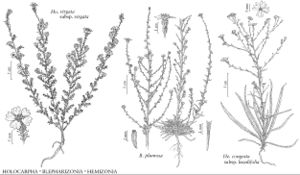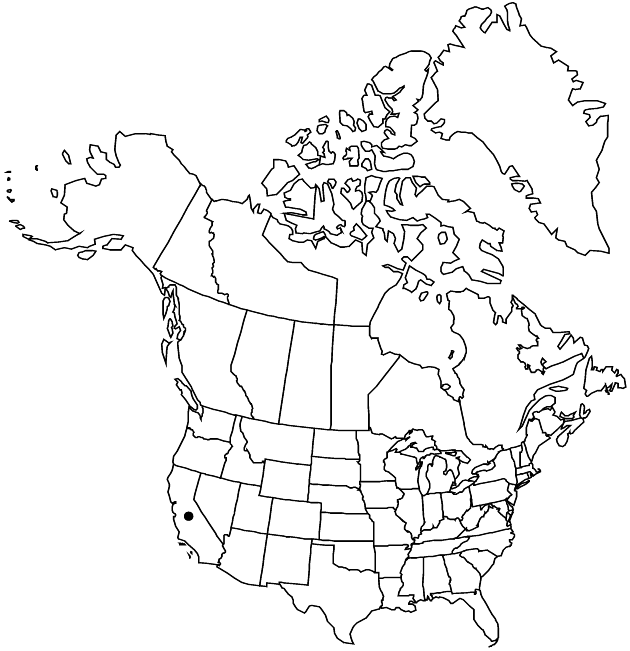familyAsteraceae
genusHemizonia
speciesHemizonia congesta
subspeciesHemizonia congesta subsp. luzulifolia
Difference between revisions of "Hemizonia congesta subsp. luzulifolia"
Univ. Calif. Publ. Bot. 13: 43. 1924.
Common names: Hayfield tarweed
IllustratedEndemic
Basionym: Hemizonia luzulifolia de Candolle in A. P. de Candolle and A. L. P. P. de Candolle, Prodr. 5: 692. 1836 (as luzulaefolia)
Synonyms: Hemizonia congesta var. luzulifolia (de Candolle) Jepson Hemizonia luzulifolia subsp. rudis (Bentham) D. D. Keck
FNA>Volume Importer |
imported>Volume Importer |
||
| (2 intermediate revisions by 2 users not shown) | |||
| Line 8: | Line 8: | ||
}} | }} | ||
|common_names=Hayfield tarweed | |common_names=Hayfield tarweed | ||
| + | |special_status={{Treatment/ID/Special_status | ||
| + | |code=F | ||
| + | |label=Illustrated | ||
| + | }}{{Treatment/ID/Special_status | ||
| + | |code=E | ||
| + | |label=Endemic | ||
| + | }} | ||
|basionyms={{Treatment/ID/Basionym | |basionyms={{Treatment/ID/Basionym | ||
|name=Hemizonia luzulifolia | |name=Hemizonia luzulifolia | ||
| Line 60: | Line 67: | ||
|publication title=Univ. Calif. Publ. Bot. | |publication title=Univ. Calif. Publ. Bot. | ||
|publication year=1924 | |publication year=1924 | ||
| − | |special status= | + | |special status=Illustrated;Endemic |
| − | |source xml=https:// | + | |source xml=https://bitbucket.org/aafc-mbb/fna-data-curation/src/2e0870ddd59836b60bcf96646a41e87ea5a5943a/coarse_grained_fna_xml/V19-20-21/V21_719.xml |
|tribe=Asteraceae tribe Heliantheae | |tribe=Asteraceae tribe Heliantheae | ||
|subtribe=Asteraceae (tribe Heliantheae) subtribe Madiinae | |subtribe=Asteraceae (tribe Heliantheae) subtribe Madiinae | ||
Latest revision as of 21:14, 5 November 2020
Leaves pubescent, villous, or sericeous (distal with hairs not notably longer at margins), all or distal glandular. Heads in paniculiform arrays. Peduncles 0 or 1–30 mm, bracts not surpassing phyllaries. Calyculi 0. Phyllaries 3.5–6.5 mm, apices usually shorter than bodies. Ray florets 5–11; laminae white, abaxially purple-veined. Cypsela widths 0.5–0.6 times lengths. 2n = 28.
Phenology: Flowering Mar–Dec.
Habitat: Disturbed sites, grassy slopes, valley bottoms, openings in chaparral and woodlands, often clayey soils, serpentine
Elevation: 0–1000 m
Discussion
Subspecies luzulifolia occurs from the North Inner Coast Ranges and northern Great Valley through the San Francisco Bay area to the southern South Coast Ranges. Natural hybridization between subsp. luzulifolia and subsp. lutescens has been reported (E. B. Babcock and H. M. Hall 1924).
Selected References
None.
Lower Taxa
None.
... more about "Hemizonia congesta subsp. luzulifolia"

